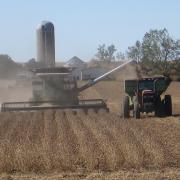Camelina is a feedstock for biodiesel. Info on production and challenges; specific guides for US growing regions.

Contents
- Introduction
- Production and Agronomic Information
- Production Challenges
- Additional Resources
- Contributors to This Article
Introduction
Camelina (Camelina Sativa L. Crantz), sometimes called “false flax” is a member of the mustard (brassica) family. It contains 30 to 40% oil by weight. The oil is mostly unsaturated (90%) and is high in Omega-3 fatty acids making it useful …

